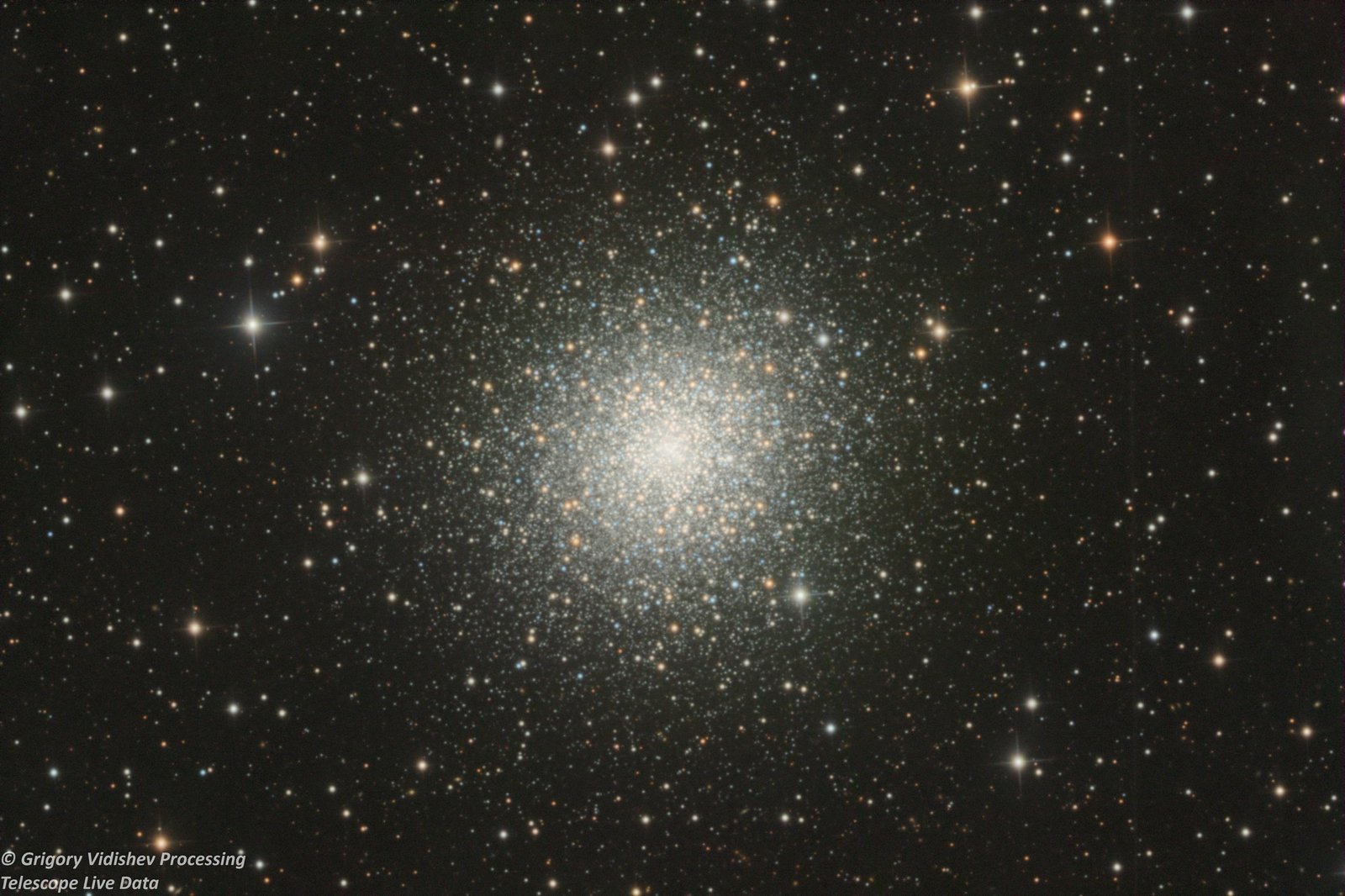

M 2 Globular Star Cluster
| Description |
Messier 2, also known as M2, is a globular cluster located in the constellation Aquarius, about five degrees north of the star Beta Aquarii. It was discovered by the French astronomer Jean-Dominique Maraldi in 1746 and is one of the largest known globular clusters. Maraldi initially observed M2 while he was studying a comet with Jacques Cassini. In 1760, Charles Messier rediscovered it, mistakenly identifying it as a nebula with no associated stars. It wasn’t until 1783 that William Herschel became the first to resolve individual stars within the cluster. Under exceptionally clear conditions, M2 can be faintly seen with the naked eye. However, binoculars or a small telescope will show the cluster as a non-stellar object, while larger telescopes can resolve individual stars. The brightest stars in M2 have an apparent magnitude of 6.5. |
|---|---|
| Data/Processing Attribution | Data was purchased from Telescope Live and I did processing only. |
| Distances/Size | Distance to the object- 55,000 light years; size of the cluster is about 87 light years in diameter |
| Equipment | Mount-Software Bisque Paramount MX+ GEM; PlaneWave CDK 24″ (610mm), 3962mm focal length; Camera- QHY600 M Pro. |
| Observatory | Telescope Live, EL Sauce, Rio Hurtado Valley, Chile. |
| Exposure | LRGB filters, total exposure- 10 hours 20 min. |
